New Clues About the Dinosaur Extinction, a Mysterious Ancient Tooth, and Primitive Galaxies… Discover how scientific achievements in 2022 have broadened our horizons!
Most Notable Discoveries of 2022
- 1. Fossils Reveal an Ancient Tropical Forest
- 2. NASA’s Rover Discovers a Surprising Feature
- 3. 400-Year-Old Spanish “Ghost Ship” Reappears in America
- 4. Reviving Organs from a Dead Pig
- 5. Tonga Volcano Erupts with Astonishing Intensity
- 6. World’s Smallest Snail Species Discovered
- 7. UN Report Reveals Climate Change Effects on Human Health
- 8. NASA’s New Space Telescope Achieves Major Surprise
- 9. Antarctic Ice Shelf Unexpectedly Cracks
- 10. Ancient Tooth Tells a Mysterious Story of Human Relatives
- 11. Giant Ray Sets Record for Largest Freshwater Fish
- 12. New Details on the Cause of Dinosaur Extinction
- 13. First Discovery of Microplastics in Human Blood
- 14. New Evidence Suggests Spiders Can Dream
- 15. Discovery of Africa’s Oldest Dinosaur Fossil
Each passing year, researchers around the globe tirelessly contribute to humanity’s vast repository of knowledge. Archaeologists seek traces of the past, unveiling ecosystems and civilizations that have collapsed. Astronomers strive to explain the mysteries of other worlds, while biologists and Earth scientists illuminate the workings of our planet and the life it harbors. Medical researchers explore the complexities of the human body…
1. Fossils Reveal an Ancient Tropical Forest
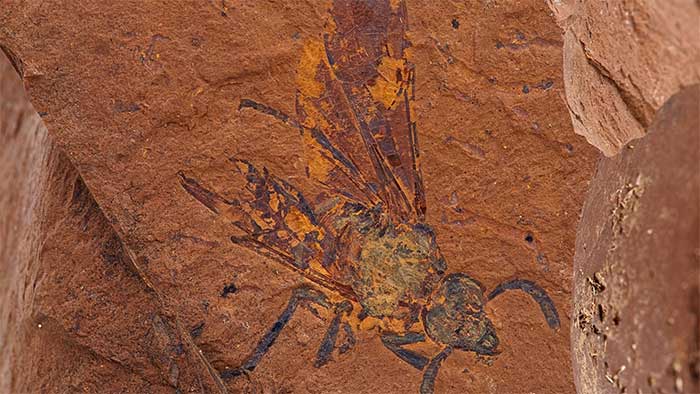
In January 2022, researchers announced a site in Southeast Australia where incredible evidence of life in an ancient tropical forest was discovered. The fossils at McGraths Flat date back 11 to 16 million years, representing some of the only known tropical forest ecosystems from the Miocene epoch.
Small, soft-bodied organisms were perfectly preserved, including spiders with intact leg hairs and fish filled with mosquito larvae in their stomachs.
2. NASA’s Rover Discovers a Surprising Feature
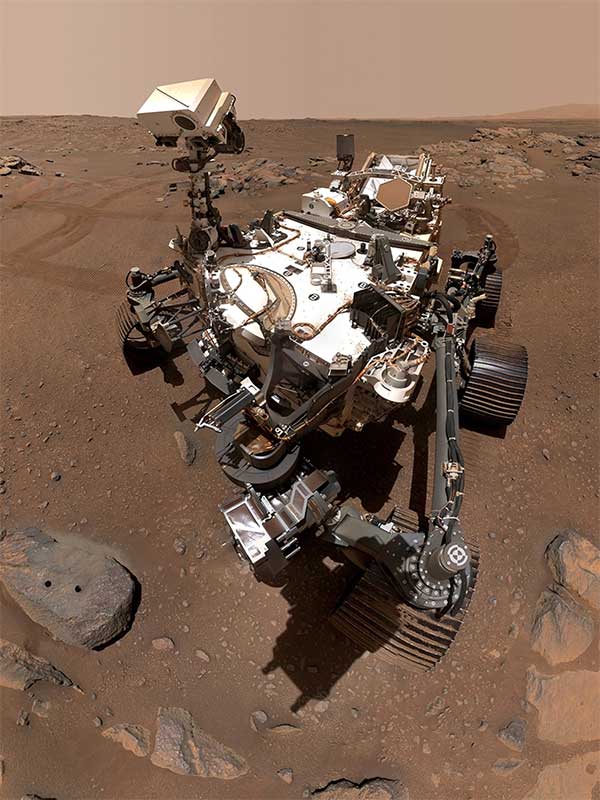
In 2022, NASA’s Perseverance rover continued its mission to search for signs of ancient life on Mars. The site the rover explored was Jezero Crater, a 45 km wide basin on the Martian surface that once contained a lake and a river delta formed billions of years ago.
Perseverance made several surprising discoveries while traversing the crater, such as a thin purple coating on rocks that resembled a type of varnish formed by bacteria on Earth.
3. 400-Year-Old Spanish “Ghost Ship” Reappears in America
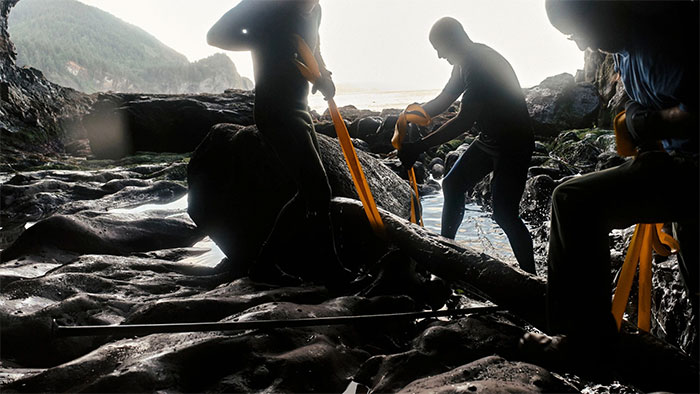
Remnants of a legendary Spanish ship from the 17th century were found on the northern coast of Oregon, USA. They likely belong to the Santo Cristo de Burgos, a ship that was en route from the Philippines to Mexico in 1693 when it went off course and disappeared.
Known as the “Honeycomb Ship,” this mysterious lost vessel has inspired legendary tales for centuries, even serving as inspiration for the 1985 film “The Goonies.”
4. Reviving Organs from a Dead Pig

For the first time in medical history, scientists at Yale University preserved the function of multiple organs from a pig, including the brain, heart, liver, and kidneys, even one hour after the animal’s death. This research could someday expand the viability of human organs, aiding in life-saving transplants. In fact, thousands of donated organs are discarded each year because they are not preserved immediately.
This research raises hope for a range of future medical applications in humans, as it could help organs last longer, potentially saving thousands of lives in need of transplants worldwide.
5. Tonga Volcano Erupts with Astonishing Intensity
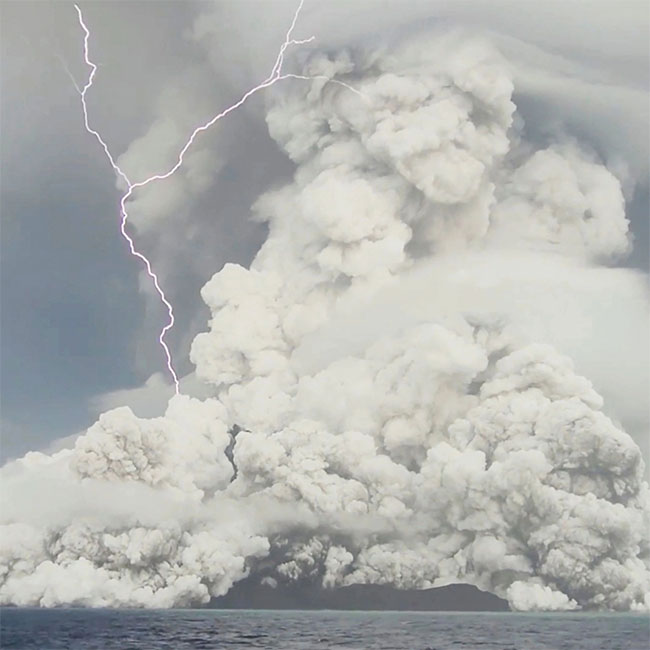
In January, the underwater volcano Hunga Tonga-Hunga Ha’apai in the Kingdom of Tonga caused an unprecedented eruption in recent decades. The explosion generated pressure waves globally and triggered terrifying tsunamis that struck nearby and distant shores.
Before the volcanic ash settled, scientists raced to collect data on the eruption’s strange phenomena, hoping to better understand the mechanism behind the explosion and the significant impacts it caused.
6. World’s Smallest Snail Species Discovered
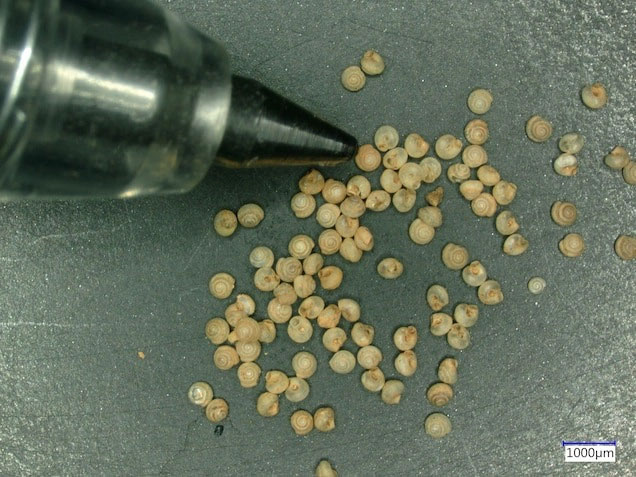
While searching for soil-dwelling animals at two locations in Southeast Asia, scientists discovered several new snail species. Two of them are smaller than any previously known species. One was named Angustopila psammion, derived from the ancient Greek word for “sand,” inhabiting caves in Vietnam and measuring just 0.6 mm in diameter. The other was discovered in a limestone gorge in Laos and named A. coprologos.
7. UN Report Reveals Climate Change Effects on Human Health

For decades, scientists have warned about the forthcoming risks of climate change. However, according to a groundbreaking report released by the Intergovernmental Panel on Climate Change (IPCC), some dangers we face have already manifested.
The report states that by 2100, three-quarters of the global population may regularly be exposed to extreme heat stress. People also face increased lung damage due to air pollution and more diseases caused by vector-borne organisms like mosquitoes and ticks as they spread to new areas.
8. NASA’s New Space Telescope Achieves Major Surprise

In 2022, NASA’s James Webb Space Telescope provided humanity with unprecedented images of the farthest reaches of the universe.
One image of distant galaxies magnified by the gravitational lensing of other galaxies in the foreground provides the “deepest view of the universe ever,” according to Thomas Zurbuchen, a scientist working at NASA.
9. Antarctic Ice Shelf Unexpectedly Cracks
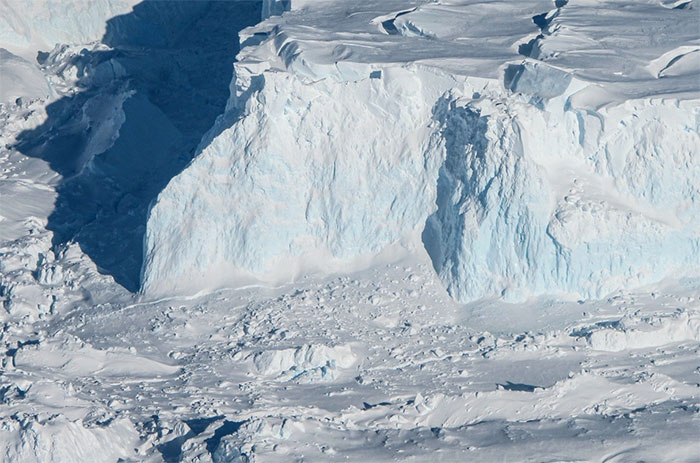
In the southwestern part of Antarctica, the wedge of the continent located south of Argentina contains enough ice to raise sea levels by 3 meters. Some of that ice will certainly melt as climate change “scorches” Antarctica, but scientists remain uncertain about how much ice will melt or how quickly.
However, early this year, researchers observed alarming signs that a major collapse could occur soon. A large ice shelf—the part of the ice that protrudes into the sea, preventing the ice above from sliding into the ocean and melting—unexpectedly cracked suddenly.
10. The Ancient Tooth Tells a New Story About Human Ancestry
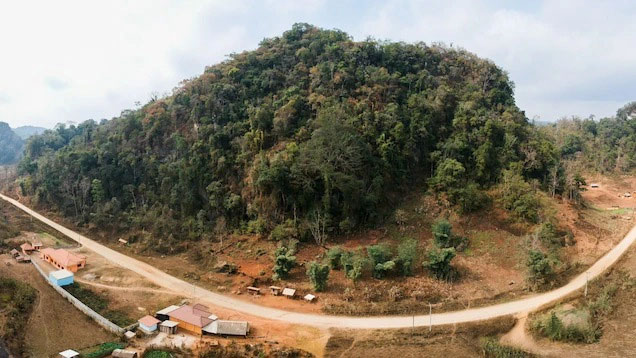
In May, archaeologists announced a significant discovery in the journal Nature Communications that caught the attention of many. They unearthed a tooth in a small cave called Cobra located in the Annamite Range in Laos.
Researchers believe that the tooth belonged to a girl who lived at least 130,000 years ago and was likely a Denisovan—a mysterious group of early humans first identified in 2010. This finding highlights the incredible diversity of hominins and their ability to survive in various climates.
11. Giant Stingray Sets Record as Largest Freshwater Fish
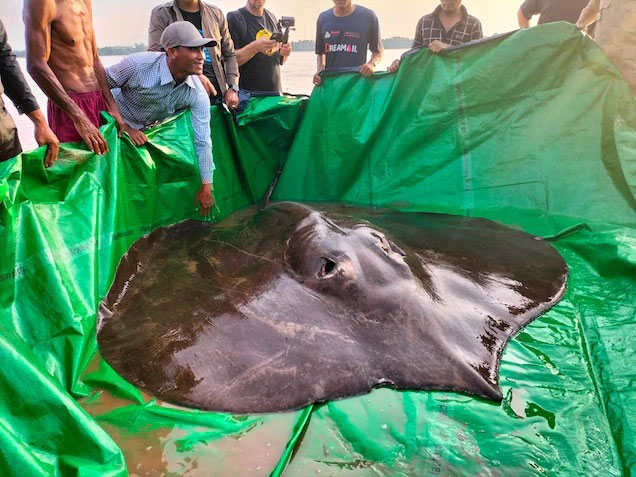
Since 2005, National Geographic explorer Zeb Hogan has traveled extensively to find the largest fish in the world. In mid-June this year, Zeb’s team in Cambodia received a call from a fisherman named Moul Thun, who was fishing in the Mekong River. Moul reported that he had accidentally caught a giant freshwater stingray “much larger” than any fish he had ever seen before.
Upon arrival, researchers discovered that this female stingray measured 3.9 meters from snout to tail and weighed nearly 300 kg. It became the largest freshwater fish ever recorded, certified by the Guinness World Records on June 24.
12. New Details About the Impact That Caused Dinosaur Extinction
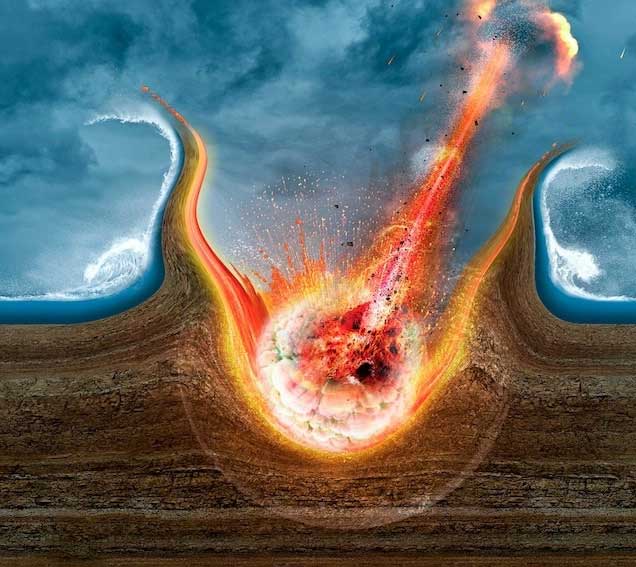
66 million years ago, the trajectory of life abruptly changed when an asteroid about 10 kilometers in diameter struck the waters off the Yucatán Peninsula in Mexico. This collision killed more than three-quarters of life on Earth, including all dinosaur species except birds. It also left a massive crater on the seabed known as Chicxulub.
In February of this year, scientists who studied a collection of fossilized fish that died in the explosion officially concluded that an asteroid fell in the Northern Hemisphere. In March, researchers provided an overview of the devastation caused by that asteroid. By August, they announced that they had found evidence of another crater on the seabed off the coast of West Africa, dating to the same period as Chicxulub.
13. First Discovery of Microplastics in Human Blood

Plastic fragments have been found on Mount Everest and in the deepest parts of the ocean, and now, for the first time, they have been detected in human blood and lungs.
In blood donated for research purposes, scientists found nano-plastics with diameters of less than a micrometer, which can be inhaled or ingested. They also discovered plastic fibers approximately 2 mm long in the lungs of surgical patients.
Microplastics are now ubiquitous in the environment, in marine organisms, and in drinking water. However, the World Health Organization (WHO) states that there is still insufficient information to conclude their toxicity to human health, and further research is needed.
14. New Evidence Suggests Spiders May Dream

Daniela Roessler, an ecologist at the University of Konstanz, usually conducts field research in the Amazon rainforest. However, during the COVID-19 lockdown in 2020, Daniela began observing jumping spiders living in a field near her home in Trier, Germany.
Daniela noticed that sometimes when the spiders slept, they would hang limply from a silk thread with their legs curled up and occasionally twitching as if they were dreaming.
Roessler stated: “The way they twitch reminded me of the dreams of dogs and cats.” Daniela set up a laboratory to observe them, and the results of her research published in 2022 showed that jumping spiders enter a sleep-like state with rapid eye movements similar to those observed in dreaming humans.
15. Discovery of the Oldest Dinosaur Fossil in Africa
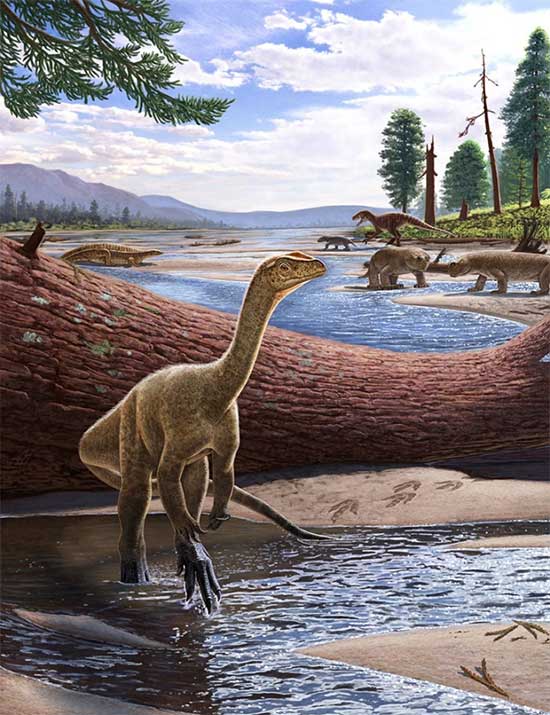
In August, a research team funded by the National Geographic Society (USA) announced a remarkable fossil: the oldest dinosaur discovered in Africa.
The ancient creature, called Mbiresaurus raathi, lived around 230 million years ago during the Triassic period. It was found among rock crevices in Zimbabwe. Although Mbiresaurus is one of the earliest known ancestors of sauropod dinosaurs (large lizard-hipped dinosaurs), it itself was not as large. According to a study published in the journal Nature on August 31, this prehistoric creature stood about 1 meter tall and weighed 30 kg.





















































